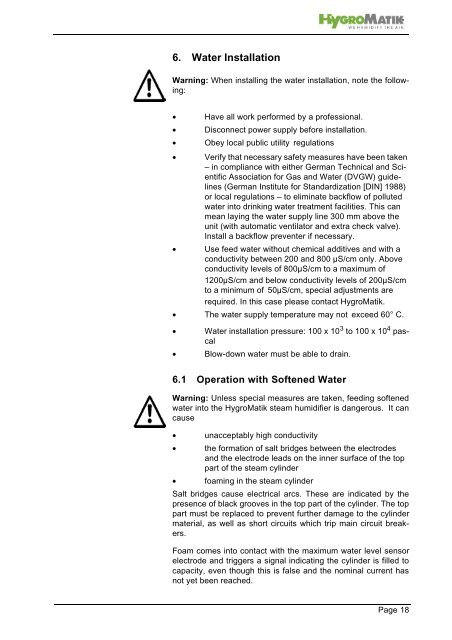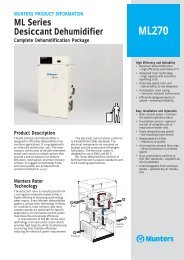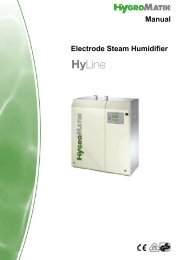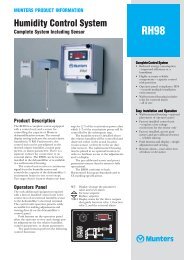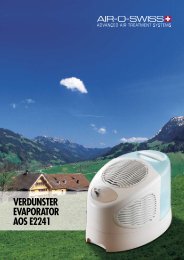Electrode Steam Humidifier Manual
Electrode Steam Humidifier Manual
Electrode Steam Humidifier Manual
Create successful ePaper yourself
Turn your PDF publications into a flip-book with our unique Google optimized e-Paper software.
6. Water Installation<br />
Warning: When installing the water installation, note the following:<br />
• Have all work performed by a professional.<br />
• Disconnect power supply before installation.<br />
• Obey local public utility regulations<br />
• Verify that necessary safety measures have been taken<br />
– in compliance with either German Technical and Scientific<br />
Association for Gas and Water (DVGW) guidelines<br />
(German Institute for Standardization [DIN] 1988)<br />
or local regulations – to eliminate backflow of polluted<br />
water into drinking water treatment facilities. This can<br />
mean laying the water supply line 300 mm above the<br />
unit (with automatic ventilator and extra check valve).<br />
Install a backflow preventer if necessary.<br />
• Use feed water without chemical additives and with a<br />
conductivity between 200 and 800 µS/cm only. Above<br />
conductivity levels of 800µS/cm to a maximum of<br />
1200µS/cm and below conductivity levels of 200µS/cm<br />
to a minimum of 50µS/cm, special adjustments are<br />
required. In this case please contact HygroMatik.<br />
• The water supply temperature may not exceed 60° C.<br />
• Water installation pressure: 100 x 10 3 to 100 x 10 4 pascal<br />
• Blow-down water must be able to drain.<br />
6.1 Operation with Softened Water<br />
Warning: Unless special measures are taken, feeding softened<br />
water into the HygroMatik steam humidifier is dangerous. It can<br />
cause<br />
• unacceptably high conductivity<br />
• the formation of salt bridges between the electrodes<br />
and the electrode leads on the inner surface of the top<br />
part of the steam cylinder<br />
• foaming in the steam cylinder<br />
Salt bridges cause electrical arcs. These are indicated by the<br />
presence of black grooves in the top part of the cylinder. The top<br />
part must be replaced to prevent further damage to the cylinder<br />
material, as well as short circuits which trip main circuit breakers.<br />
Foam comes into contact with the maximum water level sensor<br />
electrode and triggers a signal indicating the cylinder is filled to<br />
capacity, even though this is false and the nominal current has<br />
not yet been reached.<br />
Page 18


